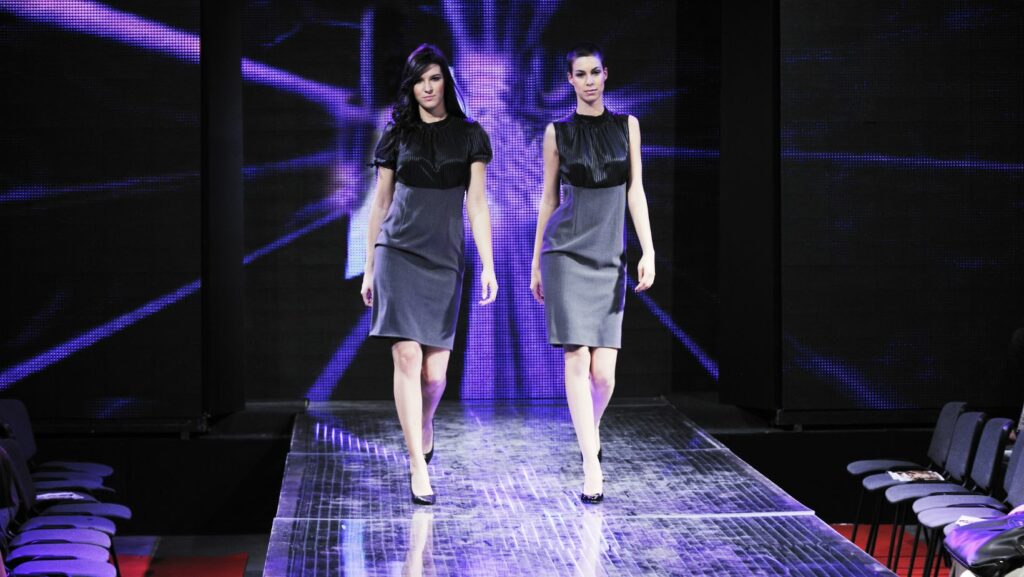In the vibrant world of fashion, fusion events are making waves, blending traditional and contemporary styles to create a unique aesthetic. They’re not just fashion shows, they’re cultural celebrations that transcend borders and challenge norms.
Fusion fashion events have become hotspots for designers seeking fresh inspiration and audiences craving something off the beaten path. They’re a testament to the limitless creativity of the fashion industry, and a beacon for those who dare to be different.
Fusion Fashion Events

Fusion fashion events, representing a unique blend of traditional and contemporary styles, are on a steep rise. Such events serve more than a mere showcasing of designs; they’ve transformed into cross-cultural celebrations that challenge established norms. Increasingly attractive to designers for inspiration and to audiences for their distinctive appeal, they signify the immense creativity nestled within the industry. Embracing diversity and innovation, they are symbols of a new fashion era. In these gatherings, the fusion of distinct elements establishes an unparalleled aesthetic, making them a popular choice in the fashion industry. Expansion of these events is evident globally, highlighting their escalating influence. Importantly, they’ve proved instrumental in facilitating a mutual culture sharing practice, which is increasingly becoming a major aspect of such events. Consequently, the fashion world anticipates more thrilling experiences in future fusion fashion events, as they continue to forge fresh paths in design and cultural synthesis.
Key Features of Fusion Fashion Events

Fusion fashion events are characterized by their exceptional blend of design elements. They witness a fusion of traditional and contemporary styles, creating visually arresting fashion narratives. With the integration of digital technology, these unique events also encompass interactive experiences, giving the audience an immersive encounter with style. Furthermore, designers at these events often integrate environmental and societal themes into their collections, fanning the flames of key conversations.
Data-driven analytics is increasingly being incorporated within these events, helping companies to understand customer preferences better and shape future strategies. This effective adaptation of information and technology is another salient characteristic of fusion fashion events.
In essence, fusion fashion events merge tradition with innovation, provide platforms for diverse designers, stimulate discourse about societal topics, and utilize technology for improved engagement and business insights.
Major Fusion Fashion Events Worldwide
Prominent fusion fashion events pepper the globe, acting as leading platforms for designers to intersect tradition and modernity in their creations.

Two key events, firstly, The Lakme Fashion Week in India underscores the blending of contemporary and classical aesthetics. For over 20 years, it’s been a cornerstone event attracting innovative designers who integrate tradition with advancing trends.
Secondly, The GreenShows in New York City brings sustainability to the fore of fashionable discourse. Designers from around the globe flock to this event, not only showcasing eco-friendly contemporary designs but also unique indigenous fabrics and styles.
Lastly, London’s Africa Fashion Week spotlights the amalgamation of African traditional designs with Western silhouettes. This event is a celebration of cross-cultural collaboration, pushing the boundaries of contemporary fashion.
All three events encapsulate the true spirit of fusion in fashion, while promoting diversity and inclusivity in the industry.
The Impact of Fusion Fashion on the Industry
Fusion fashion events are reshaping the global fashion landscape. They’re not just shows; they’re platforms where tradition meets innovation, and cultural narratives are woven into every stitch. These events, like The Lakme Fashion Week, The GreenShows, and London’s Africa Fashion Week, are more than just a spectacle. They’re catalysts for discussions on societal and environmental issues, and they’re champions of diversity.
Moreover, the integration of digital technologies and data-driven strategies in these events has revolutionized the fashion industry. They’ve opened doors for emerging designers and have enhanced audience engagement. The impact of these events is far-reaching, as they continue to redefine fashion norms and expectations. So, it’s clear that fusion fashion events aren’t just a trend; they’re the future of fashion. They’re a testament to the power of cultural convergence and innovation in the ever-evolving world of fashion.

